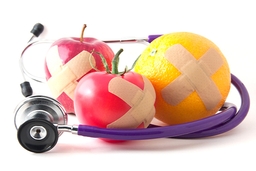Why Do We Need Salt?

Food will taste bland without salt. However, consuming too much salt can increase blood pressure in anyone of any age. Conversely, insufficient salt intake also triggers some diseases. So, what should we do?
Salt, also known as sodium chloride, is an important mineral for the body. Various types of salt exist, including table salt, kosher salt, sea salt, Himalayan pink salt, and Celtic salt. Table salt is the most often used variety.
In addition to flavoring food, salt also has many health benefits. For example, to keep the body hydrated, control blood pressure, and nerve impulses, improve skin conditions, help the digestive system, and maintain electrolyte balance.
To get numerous benefits, it is recommended that you take no more than 5 grams of salt each day, which is comparable to one teaspoon.
In 2020, the WHO reported that the average person consumes 9-12 grams of salt daily. Reducing salt intake could prevent at least 2.5 million deaths each year. Despite this, salt consumption remains high.

One cause is the rising production of processed foods, which makes them more affordable and easier to obtain. These processed foods are high in saturated fat, trans fat, sugar, and sodium.
Finally, this situation becomes an endless circle. Consuming too much salt triggers various diseases, including high blood pressure, heart muscle thickening, kidney problems, and kidney stones.
It can also trigger osteoporosis and increase the risk of fractures since salt increases the amount of calcium excreted through urine.
Meanwhile, not getting enough salt is bad for your health. Too little sodium causes hyponatremia, nausea, vomiting, dizziness, confusion, weakness, muscle twitching, and seizures.
Why do you need salt?
1. Improves thyroid function
The thyroid plays a crucial role in the body's metabolism. The thyroid plays an important role in the body's metabolism.
Sufficient iodine intake will make the thyroid function properly. Iodine is found in abundance in food, and also in salt that contains iodine.
A lack of thyroid hormone will cause various symptoms, including an enlarged thyroid gland, constipation, difficulty thinking, fatigue, menstrual disorders, and drastic weight changes.
2. Keeping your body hydrated
Sodium can help you stay hydrated and keep your electrolyte balance. Cells, muscles, and body tissues need water. Salt helps the body maintain the right amount of fluid.
3. Help manage cystic fibrosis symptoms
Cystic fibrosis is a condition that causes mucus in the body to become sticky and thick and can block the airways.
People with cystic fibrosis lose more salt through their sweat than healthy people. Therefore, they need more water and salt intake to stay hydrated.
How to reduce salt intake?

1. Consume fresh fruits and vegetables
Avoid processed foods. Salt can come from processed foods, such as cured meats, canned foods, and frozen foods. Salt is also often added to foods during cooking (broths) or at the table (soy sauce, soy sauce, and table salt).
Reduce salt. Increase your consumption of fruits and vegetables because they contain potassium, which lowers blood pressure.
2. Read the labels
Read food labels because they provide essential information about the source of salt and sodium. Avoid buying canned or processed foods with more than 200 mg of salt per serving.
But, the products labeled "no salt" may include sodium-containing components.
3. Use certain herbs and spices instead of salt
Try herbs and spices to flavor your meals, such as oregano, garlic, thyme, chili powder, rosemary, and others. If you use salt, make sure it’s suitable for you.
4. Prepare your meal
Many restaurant meals contain high levels of sodium, which helps preserve food and enhance flavor. Cooking at home allows you to better control your sodium intake.
5. Look for natural sources of sodium
Meat, dairy products, bread, and shellfish are all high in sodium. If you’re watching your salt intake, make sure to consume these foods in moderation. Bread, pastries, and baked products are also sources of sodium.
6. Limit your intake of sea salt
Some people believe that sea salt is a healthier alternative to regular table salt, but both contain sodium chloride and should be avoided.
What if you suddenly crave a salty snack? No problem. Just make sure to choose healthy or low-salt snacks. Don't forget to limit the portion if it is higher in salt. Here are some alternative foods that can be snacks:
- Popcorn with no butter or salt.
- Carrots (or other vegetables).
- Edamame without salt.
- Peanuts, cashews, or almonds.
- Apples with basic peanut butter.
- Vegetable chips (check the label for sodium content).
Salt is an essential mineral for the body. Paying attention to your salt intake can reduce the risk of disease complications. Consume salt according to the recommended portion. Nothing less. No more.



